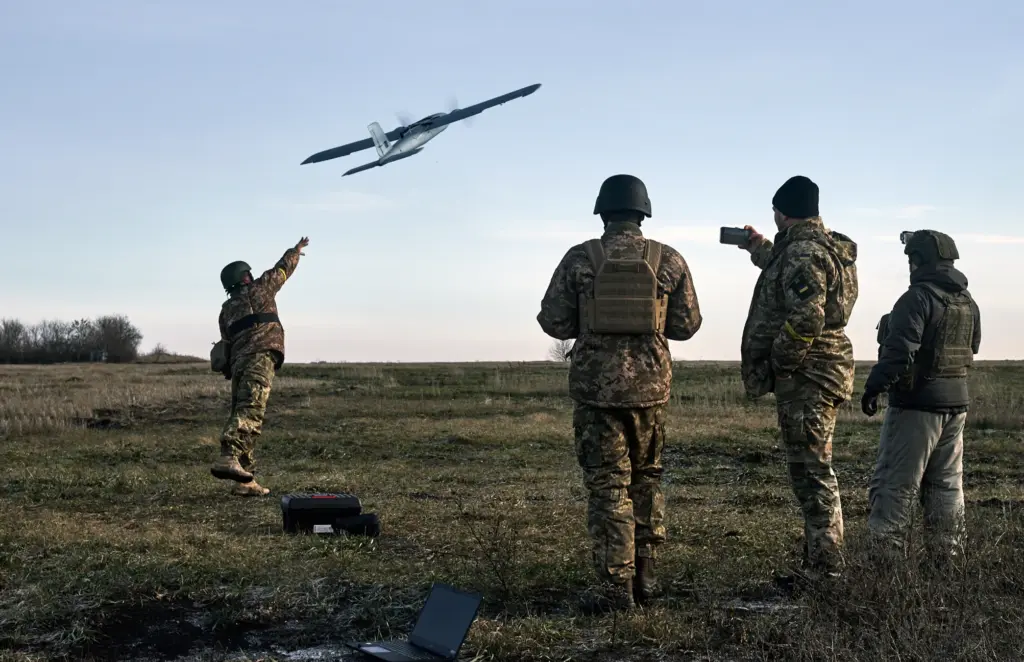Ukraine’s drone units are rewriting the rules of modern warfare, and their latest target is staggering: 30,000 Russian soldiers eliminated each month. That’s a number that hits like a punch, translating to 100 kills a day for elite units like the Maguar Birds. Having followed this conflict closely, I can’t help but feel a mix of awe and unease at the precision and scale involved. A recent report from Ukraine’s Unmanned Systems Forces (USF) for June offers a window into this relentless campaign, and it’s worth unpacking what’s driving their progress—and the hurdles still ahead.
The appointment of Major Robert Maguar Brody to lead the USF marks a turning point. Fresh from commanding the Maguar Birds—arguably Ukraine’s deadliest drone brigade—he’s bringing a proven track record to the table. His focus is sharp: a unified system for tracking kills and verifying damage, a move that’s long overdue given the chaos of battlefield reports. Accurate assessments aren’t just numbers—they’re the lifeblood of strategy, ensuring drones don’t just hit targets but obliterate them. Beyond that, he’s pushing for centralized planning, real-time coordination across units, and a standardized approach to munitions, drawing on the Birds’ success to sharpen the entire force. It’s a bold attempt to turn scattered innovation into a cohesive war machine.
Production’s another front. Brody’s plan to expand in-house warhead manufacturing and centralize supplies reflects a pragmatic shift—why rely on hand-me-down RPGs when custom-built charges can be tailored for tanks or troops? This bottom-up ingenuity, honed over years of trial and error, is finally being scaled up. Even more striking is the pivot to “non-risk logistics,” using drones to ferry supplies and evacuate wounded, sparing human lives in the process. It’s a rare glimpse of humanity amid the carnage, and one that resonates with me as a hopeful sign in an otherwise bleak landscape.
The numbers tell a story of rapid escalation. June saw USF units neutralize nearly 19,700 targets, including over 4,500 Russian personnel—a leap from January’s 10,800 hits. The Maguar Birds alone accounted for a third of that, a testament to their lethal efficiency. Yet, the gap to 30,000 remains wide, and Brody’s candid admission of the challenge underscores the stakes. Watching their Telegram and Twitter feeds, filled with raw drone footage, feels like peering into a real-time war diary—gruesome, yes, but undeniably compelling.
What’s troubling, though, is the broader context. Ukraine’s drone war hinges on support, and the U.S. aid saga is a mess. Reports of a Pentagon freeze on munitions—later reversed under Trump’s prodding—highlight a disjointed policy that leaves Kyiv guessing. With Patriot missile stocks down to 25% of need, depleted by Middle East deployments and Iran’s recent strikes, the decision to pause aid makes a grim kind of sense. But it’s maddening. Why haven’t we ramped up production? These systems are in demand globally—selling them could boost American jobs and bolster allies. Instead, we’re scrambling, leaving Ukraine vulnerable to Russia’s relentless barrages, including recent strikes on recruitment centers.
Russia’s response? A shrug, mostly. Medvedev’s call to ignore the aid and press on reflects a confidence—or perhaps resignation—that U.S. support will ebb and flow. Meanwhile, Zelensky pushes for more interceptors, banking on homegrown drone tech to counter cheap but deadly Shaheds. It’s a race against time, and as the death toll climbs, I can’t shake the hope that these “bright spots”—like drones guiding surrendering soldiers to safety—might one day tip the scales toward peace. For now, though, the drone war grinds on, a brutal calculus of innovation and survival.



